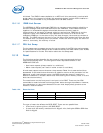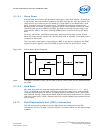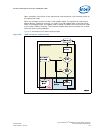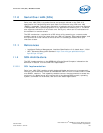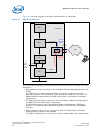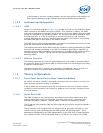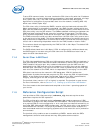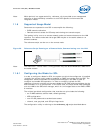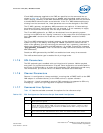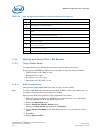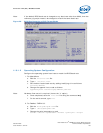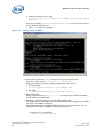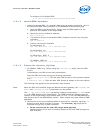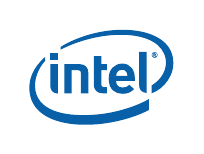
MPCBL0010 SBC—Serial Over LAN (SOL)
Intel NetStructure
®
MPCBL0010 Single Board Computer
Technical Product Specification October 2006
148 Order Number: 304120
To start SOL communication, the user invokes the SOL client utility with the IP address
of the blade and a series of authentication parameters (username, password, privilege
level, cipher suite, etc). The IPMI v2.0 specification allows for AES encryption
algorithms for encryption of payload data sent over the network, including AES-128,
which uses 128-bit cipher keys.
The SOL client utility initializes the RMCP+ session with the blade and activates SOL.
When authentication is successfully completed, the IPMC firmware collects serial port
data from the blade’s serial port, formats it into network packets, and forwards it to the
SOL client utility over the SOL session. The SMBus sideband interface port between the
IPMC and base interface Ethernet controller is used for this purpose. The SOL client
utility receives the packets, extracts the serial port data, and displays it on the screen.
The IPMC extracts the serial port data received from the SOL client utility and writes it
to the serial port of the blade. This allows network redirection of the blade’s serial port
data stream that is independent of the host OS or BIOS. The Ethernet controller plays a
critical role in redirecting the packets meant for the IPMC, based on receive filters.
The maximum baud rate supported by the IPMC for SOL is 38.4 kbps. The default SOL
baud rate is 9.6 kbps.
Note: The BIOS default baud rate is 9.6 kbps. If SOL is configured for a different baud rate,
the BIOS output is not seen using the SOL client until the BIOS baud rate is set to
match the SOL client baud rate.
11.4 Serial Over LAN Client
The SOL client establishes an IPMI-over-LAN connection with the IPMC on the blade. It
then activates SOL, which switches the board hardware to redirect serial traffic to the
IPMC instead of the serial port. Any outbound characters from the UART now are
packetized by the IPMC and sent over the network to the SOL client via the sideband
interface port. Conversely, any input on the SOL client is packetized by the client and
sent over the network to the IPMC, which is responsible for conveying it to the UART.
SOL data is carried over the network in UDP datagrams. IPMI 2.0 defines the
specification of packet formats and protocols for SOL. As per the IPMI 2.0 specification,
RMCP+ is the packet format when the Payload Type is set to “SOL”. Authentication,
integrity, and encryption for SOL are part of the RMCP+ specification.
The ipmitool client (version 1.8.7 or higher) is required. The ipmitool is open source.
For more information, refer to Section 11.8, “Setting up a Serial Over LAN Session”
This client needs to be downloaded and compiled on the Linux* operating system of
your choice.
11.5 Reference Configuration Script
Intel provides an SOL reference script (reference_cfg) that sets up the various
parameters required for SOL operation.
The SOL configuration reference script (reference_cfg) sends a sequence of IPMI
commands to configure an SBC to enable the SOL feature. This script can be executed
on a payload CPU for local configuration or on a node that has network connectivity to
the target SBC. Without this IPMC configuration, the SOL client utility is not be able to
communicate with the SBC. This script is provided to customers as an example of a
semi-automated method of configuring systems and is not meant for use in production
environments.
The ipmitool utility enables a user to establish an RMCP+ session with the SBC’s
management controller and activate two-way SOL packet communication.



